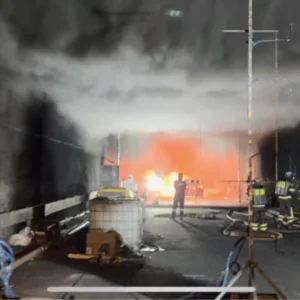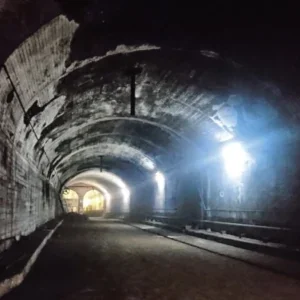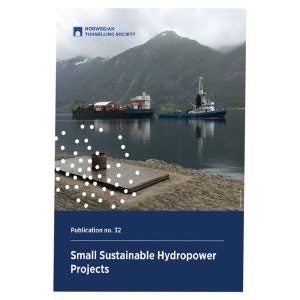
Congratulations to The International Tunnelling Association and the British Tunnelling Society (BTS) as they both approach their 50th anniversaries. Born in 1974 of nineteen OECD Parent Nations, the aims of the International Tunnelling and Underground Space Association (ITA) are similar to those of the BTS:
- To encourage the use of the subsurface for the benefit of public, environment and sustainable development.
- To promote advances in planning, design, construction, maintenance and safety of tunnels and underground space by bringing together relevant information and by studying related questions raised
Since its establishment, ITA has grown to have 78 Member Nations. By 2019, the attendance at its annual World Tunnel Congress (WTC) approached 2,000 delegates; it has around 30 Working Groups (WG) and ITAtech Activity Groups (AG); 18 major industry sponsors; and is an officially recognised NGO of the United Nations.
In 50 years, the BTS has grown to nearly 1,000 members and 96 corporate members. Both ITA and BTS have a combined global outreach to a network of more than 20,000 industry and professional practitioners.
The General Assembly of the ITA appointed a new executive committee and ITA’s first female president during the Naples WTC in May 2019; in May 2020, the BTS also elected its first female chairperson. There have also been three ITA presidents from the UK: Sir Alan Muir Wood, 1974-77 (the first ITA President and Honorary Lifetime President); Colin Kirkland, 1989-92; and myself, Martin Knights, 2007-2010. Coincidently, Muir Wood and Kirkland were chairmen of the BTS, and Muir Wood was a President of the Institution of Civil Engineers (ICE). Interestingly, all three have worked for Halcrow, now part of Jacobs.
The ITA’s principal objective is to be the `go to` international representative of Tunnelling. ITA’s growth rate over the past 15 years is testimony to that. The UK, through the BTS, is one of the founding nations of ITA and the BTS is a respected and admired society within the ITA ‘family’. The BTS’s international reach and influence regarding technical agenda, codes and guidance, networking, frequency of lecture and training programmes and social activities is widely recognised. So there is indeed much to celebrate on their joint achievements over the past 50 years.
The BTS is not just a learned society: it is also a social society and has a more active annual programme, compared to other national tunnelling societies. Prior to Covid, where else would 150 or so engineering professionals (of all ages, diversity and affiliations) have met monthly for 10 months of the year, gathering at 5.30pm in the early evening at the ICE in the centre of Westminster; listening to a technical lecture for 75-90 minutes and then socialising in the bar from 7.15pm to 10pm, ending in a rush to get the last train home.
The pre- and post-lecture gathering in the ICE bar was (and still is) as important as the technical content and lessons learned from the lecture – if not more important for some regular attendees. Added to this, there is a BTS Committee meeting held on the afternoon prior to the evening lectures. The BTS has maintained these, however programmes during the Covid lockdowns and the post-lecture social events are held virtually but still remain well attended.
The BTS Young Members (BTSYM) is a BTS initiative which began over 10 years ago (the current BTS Chair was also the first Chair of the BTSYM). Within three to four years, BTSYM was quickly replicated by the ITA’s ITAYM and also worldwide with ITA encouragement. The BTSYM has monthly meetings with a high standard of technical content and discussion.
So, does the BTS need the ITA? Probably not. Well, not in the way that other nations need the unifying force and international outreach that ITA brings. The US, Canadian and Australian tunnelling fraternities have to deal with vast geographies and so regular monthly meetings are a difficult challenge. The culture of several European mainland nations does not really support a seamless blend of artisan, professional, corporate and societal diversity as part of their programme of technical gatherings. To some extent, the BTS model is sustainable in Hong Kong and Singapore given the compact island sizes and wealth of local tunnelling projects.
ITA (compared to BTS) has a wider range of operational and organisational needs. ITA has full/part time secretariat and administration staff required to function as a multinational organisation, and has a multitude of agendas and a range of expectations, plus a diversity of cultures. ITA’s major annual WTC requires careful co-ordination with the host nation (until 2019, up to 2,000 delegates could be expected at a WTC). Decision making is slow and by consensus, is via committees and working groups, while major decisions have to be agreed with the Executive Council (ExCo) that meets four times a year (although l suspect ExCo is meeting more frequently at present given the impact of the pandemic).
The WGs and AGs are probably now able to meet more frequently than hitherto given that virtual media platforms have become the accepted norm for international communication. This new acceptance of virtual meetings might hopefully be the facilitator for more frequent regional and even global meetings of technical interest within the ITA. ITACET started a series of technical on-line lectures in February 2020, which is a much welcome initiative.
ITA has been criticised in the recent past for its governance and its handling of the organisation of the annual WTCs, and more so now for being unable (or too slow) to rise to the Covid challenge of providing members with regular on-line lectures, informative communications about new developments or indeed what is happening within ITA.
The ‘Scoop’ initiative is informative regarding global projects, though has little news about ITA itself. Covid is really testing the resilience of the ITA organisation and its ability to remain relevant to the members. Obviously ExCo and WG members are volunteers and naturally their employers will be their first priority in these testing times, but the apparent lack of visible direction is evident to a lot of ITA members.
However, for UK members there is always BTS which has responded well to the virtual needs of members and maintains a regular programme of online lectures. Even in these constrained times, BTS meetings have an increased attendance because the recent acceptance and improvements of virtual communication platforms has now attracted a wider and global monthly gathering – something that ITA should perhaps learn from, i.e. the ability to reach a wider and diverse audience than at present. I think UCA did well to organise the virtual North American Tunnelling (NAT) Conference programme in June 2020. The possibility of a ‘live’ Las Vegas RETC this year is optimistic (though l hope it happens) and at present anyone travelling out of the UK to the US will have to quarantine for two weeks when arriving back under government guidelines.
BTS is usually represented at World Tunnel Congresses by around 40 loyal UK regulars who, over the years, have come to understand and benefit from the network that the WTC provides. However, its exhibition facilities have been hit and miss in quality; even so, the number of exhibitors has still kept rising every year up to 2019. The number of technical papers submitted also grew, but the scientific committees will need to apply much more technical scrutiny and subject matter relevance when evaluating submissions for publication of papers (something that the ITA ExCo and future WTC scientific committees should seriously think about, otherwise the knowledge-sharing objectives of ITA will be demeaned).
The venues selected for the annual international gatherings sometimes seem remote from the relevance of tunnelling (in 2019, the main national contenders for the proposed 2022 WTC featured the pleasures of exotic beach venues in their bid presentations).
Would the late Sir Alan Muir Wood (and chief instigator for the formation of the ITA) recognise the ITA today? I think he would observe that the aims have not changed, but the means have. Sir Alan would clearly recognise the spectacular growth and influence of the ITA network. He would recognise that both ITA and BTS have been successful in their external influence i.e. responding to the growth of the industry; raising technical standards regarding safety, design, construction and maintenance; attracting diverse talent, particularly younger members; and being seen as influencing government, media and public awareness on the benefits of ‘going underground’.
However, given the current impact of Covid and the evolving requirements of members, the ITA must now adapt at a pace that maintains the loyalty of member nations, industry sponsors (who provide around 50% of ITA funding), WTC ‘regulars’ and exhibitors, and importantly, the global membership.
FOOTNOTE
This article was written in February 2020. Since that time, the recent impact of Covid has significantly tested the whole modus operandi of the ITA. Nevertheless, managing large technical organisations during Covid is a challenge for both ITA and BTS (and also for BTS’s parent body, the Institution of Civil Engineers (ICE)). Both BTS and ICE have adapted quickly to the new constraints, whereas ITA is struggling to demonstrate its relevance to the global membership.
It is hoped that the ITA ExCo and Secretariat will steer ITA to a better communications strategy and programme, and maintain its relevance to its membership, instigating the appropriate changes that BTS and many other global engineering societies are making.
Necessity is the mother of invention and the necessity for ITA is to adapt and improve, while for BTS it is to ensure that its values and successes over the past 50 years are maintained. As UK Prime Minister Boris Johnson and many other world leaders are currently saying ‘let’s build back better’.






